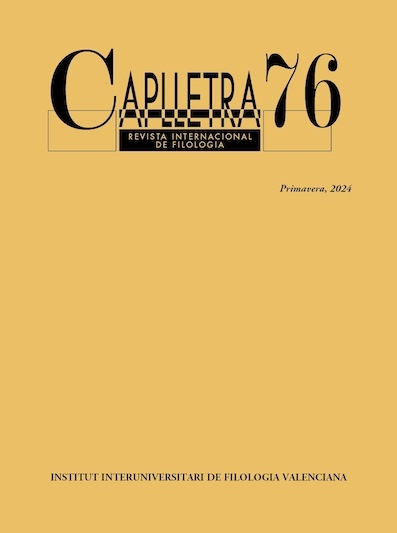Origins and definition of the lullian metaphor of the «lover» and the «beloved»
DOI:
https://doi.org/10.7203/caplletra.76.28206Keywords:
Ramon Llull, lullism, Book of Contemplation, book of the lover and the beloved, metaphor Abstract
Abstract
The metaphor of the loved and the beloved appears for the first time in the last chapters of the Book of Contemplation (1273-1276), the first principal book project of Ramon Llull. The- se references prefigure the literary and the artistic characteristics of this theme, which will be present in all Llull’s opus, especially in the Book of the lover and the beloved (1276-1283), the Ars amativa (1290), and the Tree of the Philosophy of Love (1298). This paper explains the definition of the metaphor, and it also suggests an interpretation of these first references, including some texts from other lullian works before Blaquerna. All together constitute the first stage in the evolution of this lullian image during thirty years.
 Downloads
Downloads
Downloads
Published
How to Cite
-
Abstract240
-
PDF (Català)153
Issue
Section
License
Authors submitting work to Caplletra for publication must be the legitimate holder of the usage rights. Legitimacy for the purposes of publishing the work must also include images, tables, diagrams and any other materials that may complement the text, whether they are the author of such material or not.
Copyright: on publishing their work in the journal, the author grants Caplletra. Revista Internacional de Filologia usage rights (reproduction, distribution and public communication) for both the paper printed version and for the electronic version.
All work published in Caplletra is covered by the Creative Commons license type Attribution-NonCommercial-NoDerivatives 4.0 (CC BY-NC-ND 4.0).
RESPONSABILITY
Caplletra. Revista Internacional de Filologia does not necessarily identify with the points of view expressed in the papers it publishes.
Caplletra. Revista Internacional de Filologia accepts no responsibility whatsoever for any eventual infringement of intellectual property rights on the part of authors.






